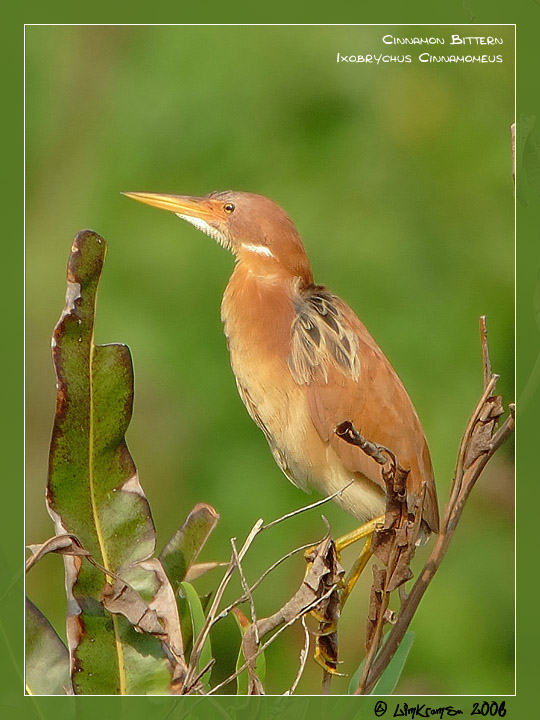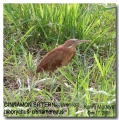(References updated. Video link) |
(→References: Removed Naturia) |
||
| Line 37: | Line 37: | ||
</gallery> | </gallery> | ||
==References== | ==References== | ||
| − | #{{Ref-Clements6thAug15}}#Birding in Taiwan | + | #{{Ref-Clements6thAug15}}#Birding in Taiwan |
{{ref}} | {{ref}} | ||
| + | |||
==External Links== | ==External Links== | ||
{{GSearch|Ixobrychus+cinnamomeus}} | {{GSearch|Ixobrychus+cinnamomeus}} | ||
Revision as of 16:24, 27 January 2020
Alternative name: Chestnut Bittern
- Ixobrychus cinnamomeus
Identification
40–41 cm (15¾-16¼ in)
Male
- Cinnamon upperparts
- Buff underparts
- Greenish-yellow legs
- Yellow bill
Female
- Brown back and crown
Juvenile: similar to female but heavily streaked brown underparts
Distribution
Breeds in Sakhalin and the Russian Far East, Korea and throughout much of eastern and southern China, Indochina, Thailand and Malaysia and on Taiwan, the Philippines, Borneo and Sulawesi. Alco occurs in Burma, west to north-west India and south through the Indian Subcontinent to Sri Lanka.
A summer visitor to breeding range present late April-September. Winters in southern China, Taiwan, Indochina, Thailand and Malaysia, the Philippines and Indonesia.
Vagrancy
Recorded as a vagrant in Burma but there is one extraordinary and apparently valid record in Europe. An immature female was caught at Piemonte in northern Italy in November 1912.
Taxonomy
This is a monotypic species[1].
Habitat
Reed-swamps and often dry grassland, prefers drier habitats than Little Bittern but also seen by ponds and rivers. Ricefields, mangroves up to 1830m..
Behaviour
Diet
The diet consists of frogs, fish, particularly eels, insects and amphibians.
Breeding
They nest in on a platform nest of reeds lined with grasses and leaves. The clutch consists of 4-6 dull white eggs which are incubate by both adults for 23 days.
Gallery
Click on photo for larger image
Juvenile
Photo by Karim Madoya
Penampang KBU, Malaysia, December 2005
References
- Clements, J. F., T. S. Schulenberg, M. J. Iliff, D. Roberson, T. A. Fredericks, B. L. Sullivan, and C. L. Wood. 2015. The eBird/Clements checklist of birds of the world: v2015, with updates to August 2015. Downloaded from http://www.birds.cornell.edu/clementschecklist/download/
- Birding in Taiwan
Recommended Citation
- BirdForum Opus contributors. (2024) Cinnamon Bittern. In: BirdForum, the forum for wild birds and birding. Retrieved 23 April 2024 from https://www.birdforum.net/opus/Cinnamon_Bittern
External Links







